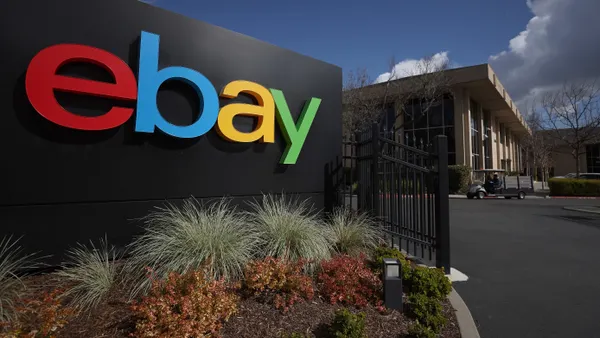Dive Brief:
-
About 47% of online shoppers worldwide said they were frustrated with their online shopping experiences for a variety of reasons during the 2016 holiday shopping season, a figure that was six percentage points higher than for the 2015 holiday season, according to a study by Pitney Bowes.
-
The study also found that about 40% of global online shoppers now engage in click-and-collect services, an increase of about 12 percentage points over the previous year. This option is especially popular in the U.S, where about 46% of online shoppers now buy online and pick up in-store, versus 27% in the previous year.
-
Increasingly, online shoppers are also turning to marketplaces, like Amazon, eBay, Flipkart, Rakuten, Tmall and JD.com, rather than individual store and brand websites, as a starting place for their shopping searches. About 67% of online shoppers turn to marketplaces to search for products, compared to 46% for search engines, 40% for retail websites, 24% for social media and 23% for mobile apps.
Dive Insight:
The number of Black Friday shoppers heading online this year is expected to be a full 9% higher than last year, which should have retailers salivating. The trouble is that an increasing number of online shoppers are getting frustrated during their holiday shopping — something retailers will need to sort out if they're hoping to keep customers buying.
What are some of the top frustrations? A lot of the post-purchase experience, according to Pitney Bowes — everything from shipping, to returns, to lost products and miscalculated duties and taxes. It should be noted, though, that this set of frustration points is being highlighted by a company that has increasingly been moving into the logistics and fulfillment arena.
In any case, the percentage of frustrated online holiday shoppers is particularly high in countries outside of the U.S., where cross-border shopping, shipping and taxing complexities are likely coming into play. For example, while 36% of online shoppers in the U.S. experienced problems during last holiday season, the percentage was much higher — 73% — in India. The frustration percentages were high across the rest of the Asia Pacific region as well: 69% in Hong Kong, 64% in China and 58% in South Korea.
That's pretty significant, considering that about 62% of retailers have a cross-border e-commerce business today, and the vast majority of retailers who don’t offer cross-border plan to offer it within the next year, per the study. If those companies follow through, about 93% of all retailers will support cross-border shopping by this time next year — a 50% increase in cross-border retailers in just one year. These retailers could be looking to cross-border shopping as a fresh avenue for new revenue as they face increasing competition.
Regardless, retailers looking to win with holiday shoppers should focus on getting shipping and the cross-border experience right during the holiday season, not to mention coming up with a strategy to deal with marketplaces. We have heard before that many shoppers (55%) go straight to Amazon to begin their search, but that trend seems to be spreading across all types of marketplaces. Retailers and brands absolutely need to have their own e-commerce sites and mobile commerce apps and they can no longer ignore the success of marketplaces — especially at holiday time.











